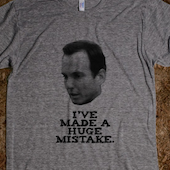Comparison-Shopping Engines: 5 Easy Mistakes to Avoid, Part V

It is series time! One topic that we haven’t really talked much about in our blog are comparison-shopping engine sites. I have worked with multiple online retailers that have seen great success with this type of online advertising. So I want to take this series as an opportunity to dive deeper into the mystery of comparison-shopping.
In the previous part of the comparison-shopping engine series, I discussed how to optimize product listings on CSEs. For this part of the series, I would like to point out some common mistakes merchants make when advertising on CSEs. Make sure to avoid these common blunders!
Failing to Update Their Data Feeds
Most advertisers think that you don’t have to spend a lot of time optimizing product listings on comparison-shopping engines. Once they have created the product feed and uploaded to the specific engine, they leave it running without updating their feed on a regular basis. This thinking is very common but wrong. Feed updates are important, as product offers may change due to products being discontinued, becoming out of stock or other changes. Not updating product listings on a regular basis may lead to inconveniences for shoppers. As a result, merchants’ seller rankings may drop and lead to a decrease in the overall success with the CSE. Updating data feed as often as possible (daily is recommended) also determines whether to show or not to show products as a result of consumer queries. CSEs favor merchants with updated and fresh product information. Although merchants might not change data feeds on a daily basis, delivering feeds daily to the comparison-shopping engine lets it see that the data is as up to date as it can be.
Using Low Quality Data to Describe Their Products
The time investment for creating and keeping product data feeds up to date is high. Most merchants don’t have the time or the money to invest in putting together stellar product feeds themselves or paying someone else to do it. As a consequence, product titles and descriptions are basic and don’t cover product details and benefits. Comparison-shopping engines want to deliver high quality search results for the consumers in order to increase their customer bases and their own ROI. Therefore, they focus on showing products with high quality titles and descriptions. Ignoring these attributes in the product feed will leave merchants at the bottom of the search results.
Leaving CPC Bids Unattended
Most merchants set the same cost per click bids for all their product listings and don’t pay much attention on adjusting them. Just with any other marketing effort, it is important to take the performance of your efforts into consideration. There are two crucial bidding strategies that every merchants need to follow to be successful on comparison-shopping engines. Bids for products that get a lot of sales need to be increased to get even more exposure to shoppers. Conversely, bids for products that get a lot of traffic but no sales need to be decreased. Once merchants reach a minimum bid for a product but would still go down even further, the product should be completely removed from the product feed. Using projections for bid regulation doesn’t work with CSEs. Instead merchants should let CSEs help them to pick out successful products and optimize them according to data provided by CSEs.
Using the Same Strategy for All CSEs
A lot of merchants believe that comparison-shopping engines are all the same as they operate on the same basic CPC model. Merchants then create a product feed and upload the same product feed to different CSEs without realizing that different CSEs have different attributes and features available. While the basic comparison-shopping model might be the same with all of them, data feeds and optimization options/features vary wildly. For example, Nextag allows merchants to add coupons and warranties to their listings, while Google Shopping and Pricegrabber don’t have a minimum CPC. On the other hand, Shopping.com and Shopzilla authorized a value-based pricing model last year. All these minor differences could mean success or loss to a merchant’s business. Therefore, it is very important to understand the different nuances and features comparison-shopping engines offer to not only be successful once merchants use them but also to choose the best engines for one’s business.
Using Boring, Ordinary Product Photos
Online shopping is a great convenience for consumers as it makes it easy to compare prices for the preferred product on one search result page in minutes. Despite not being in the store to actually look at a product, shoppers set great value to exactly knowing what they are going to buy. Merchants can accomplish this by displaying the image of the product in their listings, including the exact color, material options etc. Comparison-shopping engines may also offer to showcase additional images of products, which merchants should take advantage of in order to offer a similar shopping experience to consumers online as they might have in store when they are able to pick up products and take a look at them. Therefore, adding images of different angles of the product as well as different color options, might give merchants an advantage over competitor listings. However, many merchants do not pay attention to this feature. Some even only display a generic image or an image that is used by the competition. Shoppers are smart and merchants need to step up their game to give consumers the best shopping experience possible. Little details like adding relevant images and more image options can be key in gaining new customers.
These are just 5 quick and easy to overlook “don’ts” when it comes to optimizing for improved performance of product listings on comparison-shopping engines. While each of these might not seem like they carry a lot of importance, the overall picture of complete and detailed product listings is what leads consumers to choose the product what is right for them. One of these details missing or being too generic, might have consumers turn to a competitor listing instead of yours. Therefore, invest the time to research each shopping engine carefully, determine the one(s) that best fit your needs and take advantage of the features it offers. What are some common comparison-shopping “don’ts” that you have come across? Share them in the comments below!



